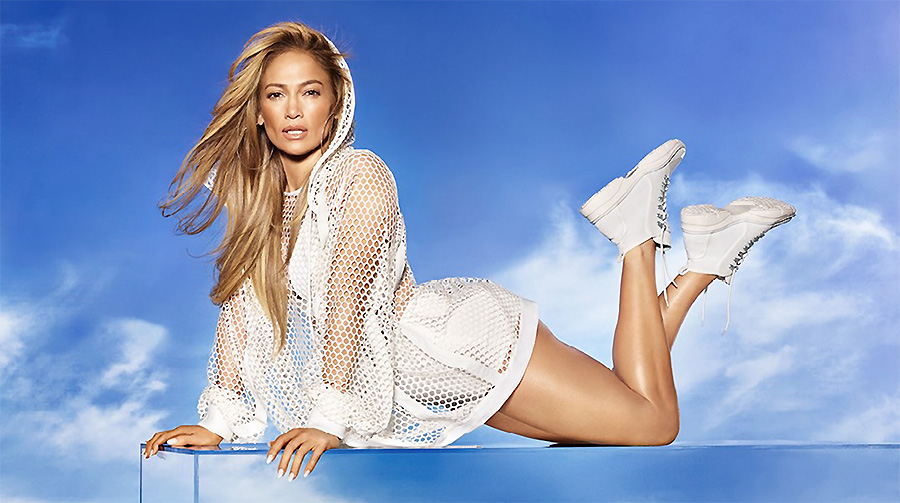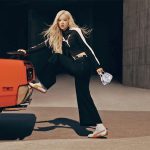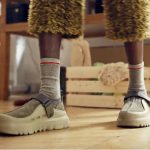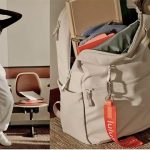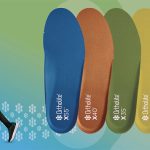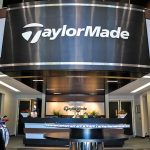Designer Brands Inc. said athleisure comps at its DSW chain in the third quarter surged 38 percent year-over-year and 30 percent compared to the third quarter of 2019. Officials remain bullish on DSW’s ability to continue to capture market share in the overall athletic footwear category despite Nike’s move to stop selling to the off-price chain.
“We believe that there is still so much room for growth as it relates to the overall athletic space that will help drive top-line growth as well as improve our margins,” said Roger Rawlins, Designer Brands’ CEO, on a conference call with analysts. “Even with our recent success in the category, we are still heavily under-penetrated to the market. As we review our athletic brand portfolio, 60 percent of the athletic brands we carry posted a comp above 25 percent during the third quarter versus 2019, proving that our investment is working.”
In March, reports arrived that Nike planned to exit six additional wholesale accounts this fall, including DSW, Urban Outfitters, Shoe Show, Dunham’s Sports, and Olympia Sports. Nike also plans to no longer sell apparel directly to Macy’s.
Nike has said its wholesale consolidation is part of its push to focus on its direct-to-consumer efforts and to limit wholesale distribution to select accounts that it believes best support its positioning in the marketplace. In 2020, Nike took similar steps to end wholesale arrangements from another group of longstanding partners, including Zappos, Dillard’s and Belk.
On Designer Brands’ third-quarter conference call, Rawlins confirmed that Nike orders stopped arriving in September and a wide assortment of Nike styles remained available for sale on the DSW.com website. Said Rawlins, “We will continue to sell the swoosh product as long as it’s on our floor.”
He declined to detail which brands see increased investments to replace Nike, although the DSW.com site features a robust selection of Adidas, New Balance, Vans, Converse, Asics, Brooks, Keds, Merrell, Puma, Reebok, Ryka, Rocket Dog, Saucony, and Skechers. However, Rawlins offered several data points signaling DSW’s ongoing momentum in the athletic and broader athleisure category. They are:
- Overall athleisure penetration at DSW was 50 percent in the third quarter of 2021 versus 38 percent in 2019.
- According to the NPD Group, DSW grew athleisure sales 26 percentage points faster than the rest of the market in July and August compared to the same period in 2019, resulting in an overall market share gain of 30 basis points.
- DSW set a record for demand in a single day and week over the recent Black Friday period, led by athletic comps jumping over 50 percent and kids comps gaining over 40 percent versus the 2019 period.
Rawlins said DSW’s success in athleisure builds on Designer Brands’ shift toward more casual product offerings that began in 2019 and accelerated over the last two years.
The athletic shift has also opened up more opportunities. Having a greater mix of athletic styles and kids, which includes a heavy athletic component, has made DSW a “top destination for families to shop for back to school” and led to DSW’s biggest back-to-school season.
“Our focus on growing our kids’ business has created an entirely new selling cycle for us around back-to-school,” said Rawlins. “We saw record back-to-school results this year and the kids’ category pushing our total company to strong positive comps over the same period in 2019 with kids’ penetration reaching over 15 percent.”
Rawlins noted that according to the NPD Group, DSW outpaced the market in kids’ dollar volume growth by seven-and-a-half times in the two-year back-to-school timeframe, which ran from July and August of 2021 versus the same period in 2019. He said, “We have leaned into this new market share opportunity with the right product, enhanced marketing to drive awareness, new customer acquisition initiatives, and this has played out perfectly.”
With a more robust athletic offering, DSW also gains a more considerable opportunity to pursue a “second athletic window” consisting of the holiday and post-New Year’s selling periods. Said Rawlins, “These windows are large, athletic selling periods in our industry. We have historically been in boot liquidation mode during these windows and expect to see material increases in athletic selling. In-position athletic inventory in these windows can compete more significantly this year and will continue to do so in the future.”
Finally, DSW’s increased exposure to athletic has allowed Designer Brands to expand its reach to the male customer base. Its men’s athletic business has grown to 8 percent of total sales in the third quarter versus 6 percent in 2019 and was up 56 percent in regular price selling in the latest third quarter versus 2019.
Said Rawlins, “We are playing bigger here than ever before, and we have significant room to continue to compete.”
Companywide, Designer Brands, in the third quarter, saw a strong recovery in top-line growth after facing in-store selling restrictions in the year-ago period. With fewer markdowns and bigger contributions from its Camuto wholesale business, Designer Brands set records in gross margin, operating income, and EPS in the quarter.
“Each and every segment contributed to these accomplishments,” said Rawlins.
Beyond the growth in athleisure and kids offerings, the retailer’s strong performance was attributed to its move to narrow its assortment to focus on the Top 50 brands and return to growth from its Camuto wholesale brands. DSW has also seen a recovery in its dress business. DSW achieved positive comps in its fashion categories during Black Friday week for the first time since the onset of COVID-19.
In the quarter ended October 31, net sales increased 30.7 percent year-over-year to $853.5 million. Results were short of Wall Street’s consensus of $895.6 million.
Reported net income was $80.2 million, or $1.04, including net benefits of 18 cents per diluted share from adjusted items, primarily related to the change in the valuation allowance on deferred tax assets. On an adjusted basis, net income in the third quarter was $66.6 million, or 86 cents, rebounding from an adjusted net loss of $18.6 million, or 26 cents, a year ago.
Adjusted EPS of 86 cents easily beat Wall Street’s consensus for 56 cents.
Gross margins improved to a record 36.7 percent compared to 25.4 percent for the same period last year and 29.3 percent for the third quarter of fiscal 2019.
Designer Brands ended the quarter with inventories of $602.1 million compared to $546.0 million for the same period last year.
“We are well-positioned despite the industry-wide supply chain issues and see our positioning as a strategic and competitive advantage,” said Rawlins. “We bought product ahead of the season and over-ordered in anticipation of inventory cuts, accelerated orders of our brands and leveraged our scale and strong relationships with our vendors. This has enabled us to get access to additional products, and it put us in a better position than most of our peers heading into the fourth quarter.”
He noted that Designer Brands started the quarter with retail segment inventories down 19 percent versus 2019 and ended the quarter with the retail segments inventory flat to 2019.
Said Rawlins, “This positions us exceptionally well to deliver fourth-quarter sales growth that is much stronger than even the third quarter.” He credited the improvement to Designer Brands’ focus on its Top 50 brands have made DSW an important account for major brands as well as Designer Brands’ Camuto wholesale brands starting to outperform.
Looking forward, Designer Brands predicted continued growth for the fourth quarter. Sales in the current quarter are expected to be flat to up low-single-digits compared to the fourth quarter of fiscal 2019. The company expects this to result in an EPS in the range of 10 cents to 15 cents for the quarter, which compares to an adjusted net loss was 53 cents in the year-ago period.
Rawlins said, “We are energized by the strength of our strategy and our record-setting results, despite unseasonably warm weather and industry-wide supply chain challenges. Looking forward, we are continuing to focus on our three key strategic pillars—customer, brand and speed—to remove friction, acquire new customers, evolve our assortment to match consumer preferences, and move product to our customers faster and more efficiently.”
Photo courtesy DSW/Jennifer Lopez

